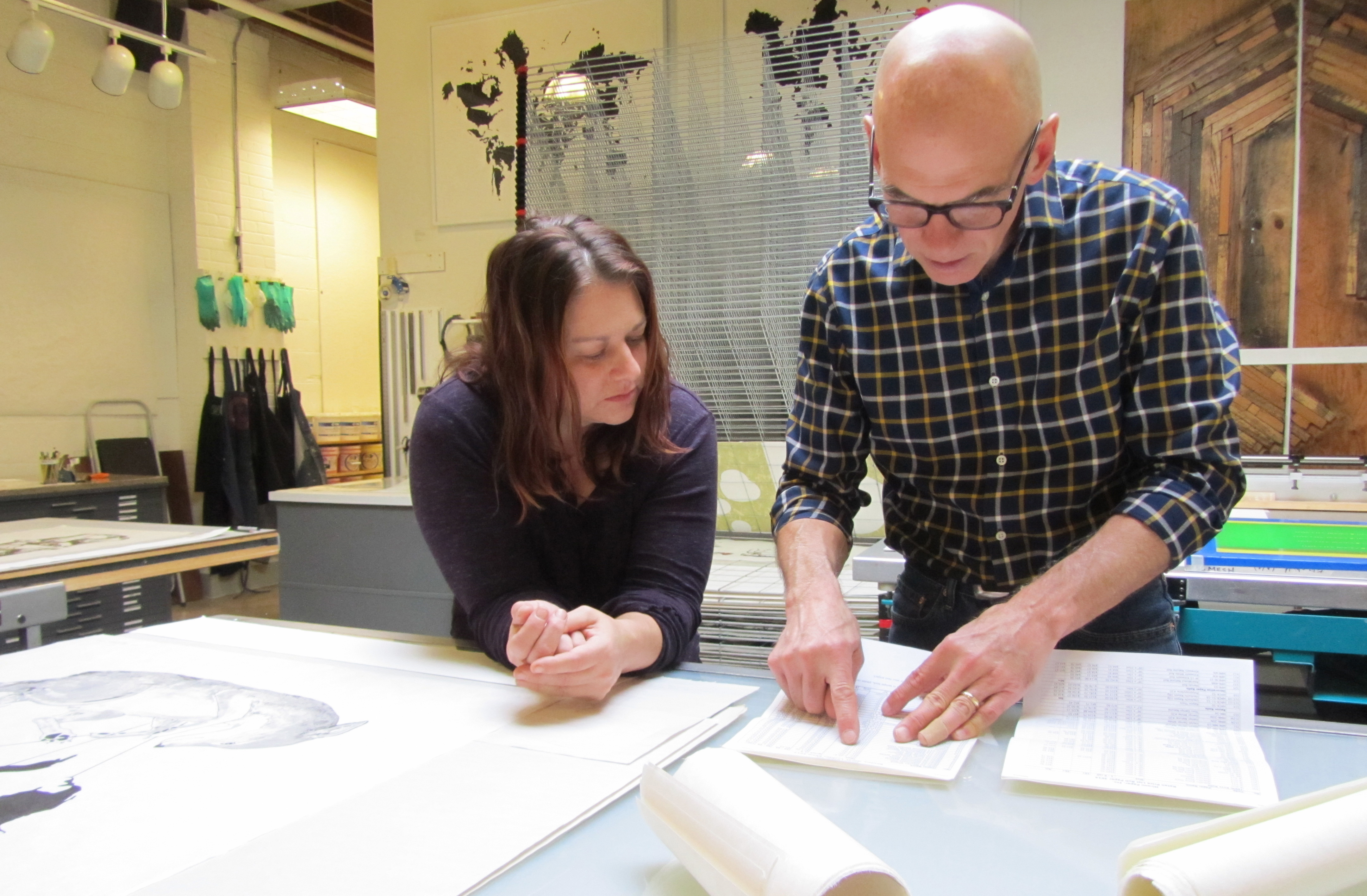
Born 1972, Minneapolis, Minnesota
Julie Buffalohead (Ponca) had a childhood steeped in Native ways. She absorbed much about her culture via storytelling, and now she calls on animals from those stories—coyote, deer, rabbit, fox, raven, owl—to lend archetypal power to her complex modern-day narratives. In the painting Six-Pack Colonialism (2018), for example, owls prepare to do battle with tiny ships seemingly entangled in the plastic rings that hold aluminum cans. The 2015 Highpoint lithographs Piggyback (cat. no. 29) and The Showdown (cat. no. 31) each depict an owl with a house strapped to its back. “I was thinking a lot about white people drawing property lines,” says Buffalohead, who grew up in the Minneapolis suburb of St. Louis Park. “Native people didn’t have an idea of property lines.”1 The Ponca, in fact, lost their land altogether: in the 1870s they were removed from their homes in Nebraska and relocated to Oklahoma, where Buffalohead still has relatives. (Note the Nebraska puppet in the print Fox Tussle [cat. no. 28 ]).
In the more autobiographical works, Buffalohead’s usual stand-in is the coyote. He’s the trickster, a shapeshifter with a contradictory nature. “He can throw things into chaos, but constantly learns from his mistakes,” she says. “I like the idea that we’re all allowed to be an imperfect person.” In the recent mixed-media work Bad Feminist , a coyote wears a bright red bra. “He allows me to do things I wouldn’t normally do in life,” she says. The sense of opposition contained in some works, such as the Highpoint lithograph and screenprint Trickster Showdown (2015) (cat. no. 32) , refers in part to being biracial: Buffalohead’s father is Ponca, her mother white. Going to suburban schools, she was teased for her last name and bullied for being different. “It’s two sides of myself, the idea of belonging and not belonging,” she says. New imagery appeared with the birth of her daughter, in 2009. As she examined her conflicting emotions about pregnancy and motherhood, she wove toys, tutus, and tea parties into her ambiguous narratives. Attendees at one party all wear animal masks, a consistent Buffalohead motif suggesting the malleability of identity.

Buffalohead is a member of the Deer clan. Her parents taught her that, among other things, this means she must never touch or eat deer. Her historian father taught in the Department of American Indian Studies at the University of Minnesota, Minneapolis, and other schools; her anthropologist mother taught at nearby Augsburg College. Buffalohead earned a BFA (1995) from the Minneapolis College of Art and Design, and an MFA (2001) from Cornell University, Ithaca, New York. Her awards include a Guggenheim Fellowship (2019) and Joan Mitchell Foundation grant (2016), as well as fellowships from the McKnight Foundation (2015, 2003), Eiteljorg Museum (2013), and Minnesota State Arts Board (2017, 2002). In addition to such group shows as “Hearts of Our People: Native Women Artists” (2019–20), organized by the Minneapolis Institute of Art, solo shows include “Eyes on Julie Buffalohead,” Denver Art Museum (2019); “The Truth About Stories: Julie Buffalohead” (2015), Museum of Contemporary Native Arts, Santa Fe, New Mexico; “Julie Buffalohead: Coyote Dreams” (2014–15), Minnesota Museum of American Art, St. Paul; and “Julie Buffalohead: Let the Show Begin” (2012–13), National Museum of the American Indian, New York. She lives in St. Paul, Minnesota.
—Marla J. Kinney
Notes
Julie Buffalohead, phone conversation with the author, June 2020. ↩︎